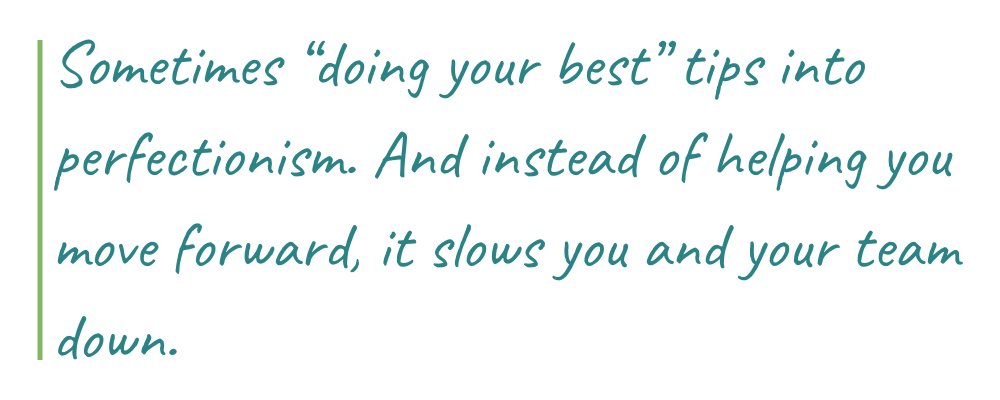How “Doing Your Best” Can Hold Your Team Back
From an early age, we’re taught to: Do your best. Take pride in it. Your best is enough. Because doing our best can build trust, earn respect, and help us succeed.
But there’s a catch. Sometimes “doing your best” tips into perfectionism. And instead of helping you move forward, it slows you and your team down. As a leader, that’s not only exhausting for you, it can also limit your team’s potential.
I saw this happen first-hand in a training I led. One leader described herself as a perfectionist and believed it was something she couldn’t change. By the end of the session, she had her “aha” moment, realizing it was draining her team.
She admitted to redoing work her team had already completed because it wasn’t done exactly as she had wanted. She sometimes avoided delegating altogether because she didn’t think anyone could meet her standards.
Her “best” had become a problem, and it didn’t feel good for her or her team. It was holding her back, taking time away from other important projects, and affecting her ability to model supportive leadership. By the end of the training, she was ready to try one of the strategies below to shift from perfectionism to progress.
So, how can leaders shift from perfectionism to progress?
Here are three powerful ways:
1. Define “Done” Before You Begin
Set clear, realistic expectations for what it means to be finished before starting a task. Talk about them with your team so everyone knows the expectations from the beginning. It is helpful to write down your expectations in a shared document with your team for future reference.
2. Delegate and Step Back
Give your team ownership of tasks with clear guidance and support. Provide opportunities for drafts and feedback. Then, as hard as it may be, resist the urge to “fix” their final work unless it truly falls short of the agreed standard.
3. Lead by Example with Imperfect Action
Make decisions, launch initiatives, or share work before it’s perfect and explain why you chose to move forward. It shows your team what is “good enough,” and that progress is valued over perfection.
The best leaders don’t get stuck chasing perfection. Instead, they create an environment where the standard is clear, the feedback cycles are defined, and they model “good enough”. This way, their teams can move forward, learn, and grow together.


